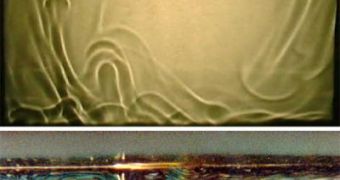Scientists at ETH Zurich have recently announced the development of a clever, new way of manipulating hydrogen molecules inside solutions. They are notoriously difficult to steer using electrical fields, because of the symmetrical way that charges are distributed within the ensemble. Details of their accomplishment are published in the latest issue of the renowned scientific journal Physical Review Letters, and are also detailed in the September 14th issue of the journal Physics.
Manipulating asymmetric molecules using electric fields is very easy to do, but electric forces can't overcome thermal motions for the highly symmetric type, such as hydrogen. About two decades ago, it was hypothesized that, by disrupting one of the chemical's two electrons, and moving it into a higher energy state, the symmetry of the entire molecule would be disrupted, thus rendering it manageable. Now, the ETH Zurich team has managed to do just that, by overcoming a major obstacle.
Experts Stephen Hogan, Christian Seiler, and Frederic Merkt noticed that excited electrons in hydrogen usually reverted back to their ground state way before physicists could take advantage of the shift and handle the molecule. So, they went through a large number of possible orbits that excited electrons might rise to, and determined which one of them was the most long-lasting one. Once it was identified, the team used a special laser to trap it in place for over 50 microseconds, which is plenty of time for researchers to study it.
In a related study, published in the same two journals, scientists from the Lawrence Berkeley and Argonne National Laboratories shed light on why molecules spontaneously rearrange inside modern, data-storage devices. Whether attached to a tape or a hard-disk, small, magnetic particles determine how the “1s” and “0s” are being stored, through their magnetic orientation. But molecules can rearrange their orientation spontaneously, corrupting data. The new research revealed that the mechanisms behind their rearrangement were, in fact, way more complicated than first thought.
The American team of experts, led by Stefan Krause, found that the shape of cluster of magnetic particles was a very important factor in determining whether the rearrangement progressed or not. In other words, the flipping of magnetic orientations happens in a sort of chain reaction. Therefore, if the experts can control the shape of the cluster, and also add some impurities inside it, then they could potentially have an additional method of quality control in designing magnetic devices.

 14 DAY TRIAL //
14 DAY TRIAL //